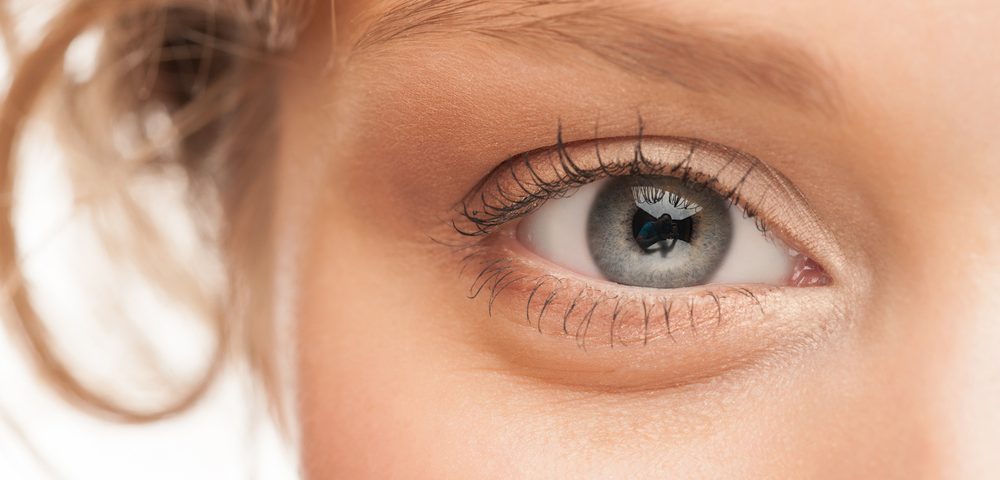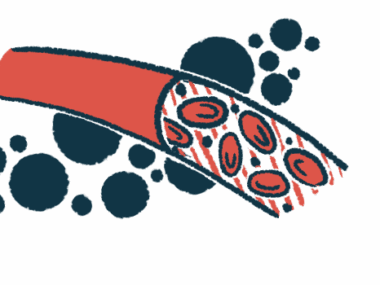My Ankylosing Spondylitis Diagnosis Journey, Part 1
Written by |

First in a series.
When I first started having symptoms of ankylosing spondylitis (AS), I was in my mid-20s which is right in the middle of the age range of when most people receive a diagnosis. How fun! I was doing things that most people that age do. I’m not ashamed to admit that I was partying, staying out late, and eating whatever the hell I wanted. I had a particular penchant for — wait for it — half-and-half lattes.
I didn’t work out very much, either. I was disconnected from my body’s needs and indulged in bad food and alcohol while running on little sleep. I was also attending grad school, working full-time, and in a relationship that was, well, toxic.
My body sensed the crash before I did. Too much stress, work, and fun, too many sleepless nights. I was constantly pushing myself past my limits. It was as if the disease, which is immune-mediated, crept out of hiding when I was at my most vulnerable.
I never thought “burning out” would happen to me. I believed I would always be perfectly healthy. I was a doer, a maker, a creator. I was an engine. In short, I was burnt out, and my first AS symptom was the proof.
One day I woke up with one bright, red, and extremely painful eye. When I say “pain,” it was like hot daggers piercing through my eyeball. I locked myself in my bathroom with the lights off as light worsened the throbbing pain inside my skull.
My sight was blurred. I felt as if I were being punched and burned at the same time. On the brink of collapse, I hobbled into my local optometrist’s office. He said I had contact burn.
While I knew it could not be contact lens burn, I took some drops and left. This was my first experience with uveitis.
At that time, doctors began to represent — ironically — a barrier to my wellness. A short time later when I complained of feeling tired, foggy-brained, and weak, my GP told me to eat better and work out more.
The uveitis became chronic. One eye was frequently flaring and getting worse with each flare. I finally saw an ophthalmologist. He took one look at me (sobbing and about 40 years younger than the other patients in his waiting room) and pulled me into a dark room. He fed magical steroid drops into my eye, and after about an hour, I felt human again. The war raging inside my head had quieted, but my eye was still red. Uveitis, he explained, doesn’t “just happen.” The inflammation was coming from somewhere.
Over the next few years, I was tested for several diseases: sarcoidosis, Lyme disease, and rheumatoid arthritis, to name a few. I had none of them. No one was checking the boxes for ankylosing spondylitis because I experienced none of the most common symptoms: back pain, stiffness, and gastrointestinal issues. I was tired and my eyes flared, but it wasn’t enough. I became a mystery.
Then, one day I was talking to my dad when he mentioned having AS. Although he had daily aches and pains, his symptoms weren’t severe. I researched tests for AS and found information about the HLA-B27 gene. I visited my doctor and demanded that I be tested. The results were positive but inconclusive: The HLA-B27 gene is associated with AS, but you can be HLA-B27 positive and not have AS — and you can have AS and not be HLA-B27 positive.
I was about 27 at this time and I still had no back pain, which is one of the diagnostic criteria for AS.
Next: Part 2—I am hit by symptoms including stiff joints and fatigue.
Have comments or questions? You can always contact me at www.twitter.com/lisamariebasile or on Instagram at www.instagram.com/lisamariebasile.
***
Note: Ankylosing Spondylitis News is strictly a news and information website about the disease. It does not provide medical advice, diagnosis, or treatment. This content is not intended to be a substitute for professional medical advice, diagnosis, or treatment. Always seek the advice of your physician or other qualified health provider with any questions you may have regarding a medical condition. Never disregard professional medical advice or delay in seeking it because of something you have read on this website. The opinions expressed in this column are not those of Ankylosing Spondylitis News, or its parent company, Bionews Services, and are intended to spark discussion about issues pertaining to ankylosing spondylitis.






Jimz
Thanks Lisa, it's always nice to see and read good views on AS... I've had AS since the mid 70' and there isn't much of my body that hasn't been affected...I myself have written from time to time for my own records to help understand this and other diseases it's brought on....Iritis was one of my first symptoms....45 years later having cataract surgery.. almost 2 years to the date with no flares, it struck my right eye.... I'm back to taking my drops and checking in with all my doctors...good luck with you and your AS...hoping for a better year for all of us..
Paula Skelton
I too experienced Uveitis. I was only 6 months out of cataract surgery and with the onset felt maybe my eye was rejecting the new lens or something had gotten trapped during my surgery. My surgeon assured me it had nothing to do with the surgery but that there was definite cause for concern. My eye started with a small red line and a bit of discomfort. Not thinking of it I just continued my daily routine thinking an eyelash or something had irritated it. After a couple of very painful weeks, I scheduled an appointment with my surgeon. I woke up one morning and my eye was swelled shut. By this time, my face swelled, became red and inflamed. I did the drops for what seemed liked forever but really was probably more like 2 months. It seemed like nothing was working. I was referred to a retinal specialist and again prescribed eye drops. After 3 visits to the specialist and no improvements, he was talking of scrapping my cornea!!! Thank God after a few more weeks I saw significant improve and chalked it up to a fluke. I saw my family doctor for a regular check up a few weeks later and she did a full panel of blood work. She called be back a week later and said she wanted to go over my results. She usually does this via skype so I knew something wasn't right. She had the nurse take me to the farthest room from the front of the office. Now I'm really starting to panic. What was going on and where is everyone? She came in and closed the door. As she began to fiddle with my file she said "I don't want to worry you but we found you're positive for the HLA-27B gene." Me, not knowing what she was talking about I was like ok, how do we fix this? She said we can send you to a rheumatoid doctor and let them take it from here. We talked a little more about what the test results meant and what she felt was AS. She started going over symptoms and then she got to uveitis and how they relate to this disease. I about fell out of my chair. With years of chronic back and hip pain, and then suffering with uveitis earlier that year...it all started making sense. Since all of this has come full circle I have a better understanding of the what and possible why's. Now to get in to see the rheumatoid doctor (which has been truly a nightmare). Thank you for sharing. Sorry I ran on about myself but I think we all have that "ah-ha" moment when things finally start coming together with AS and the diagnosis. Good luck on your journey. I look forward to reading more about your story.
H clarke
Jimz.. what medications did you take? What works?